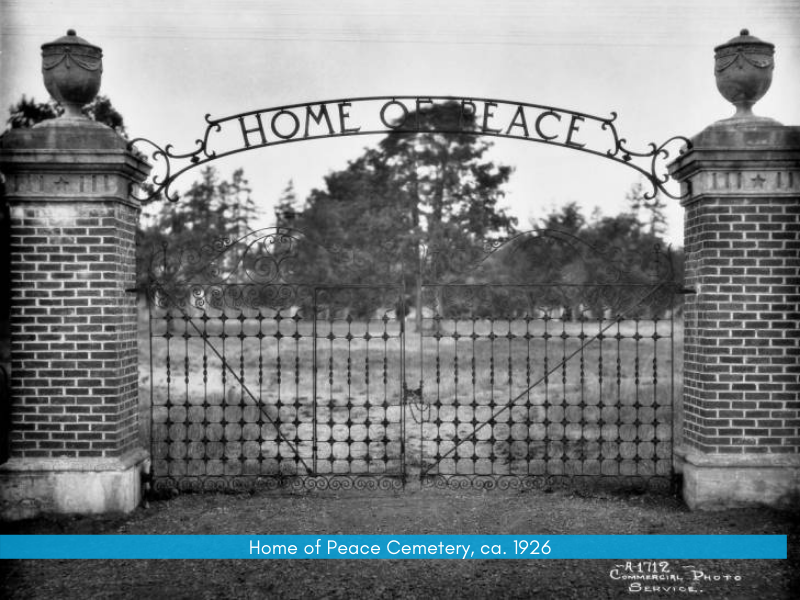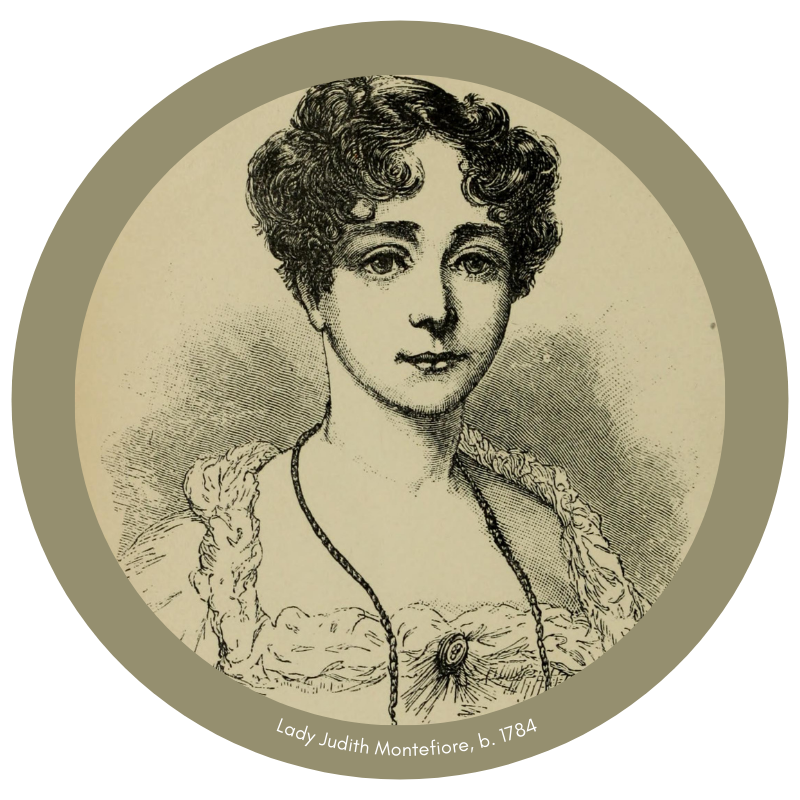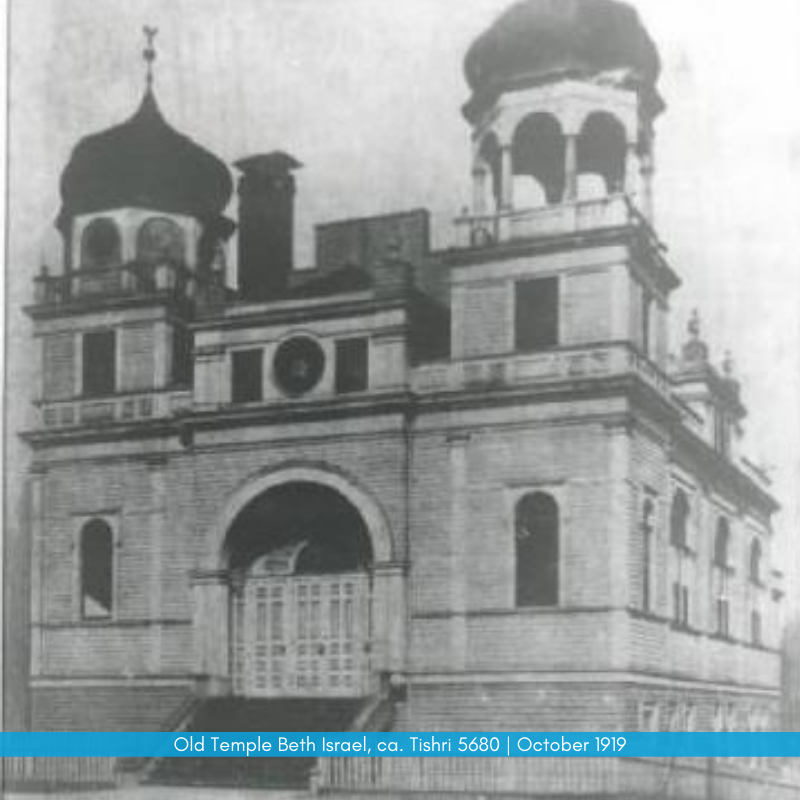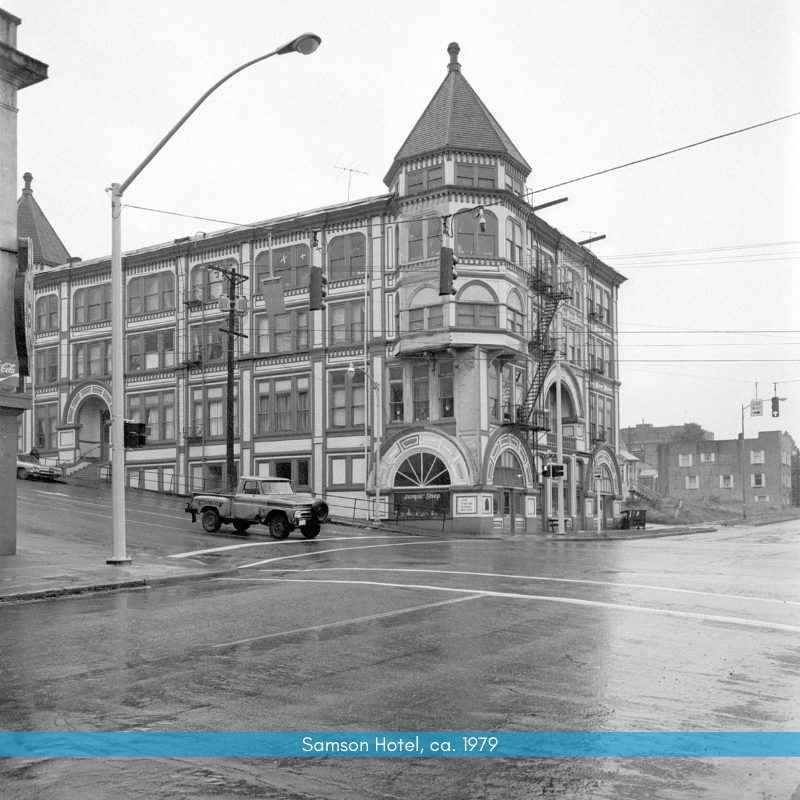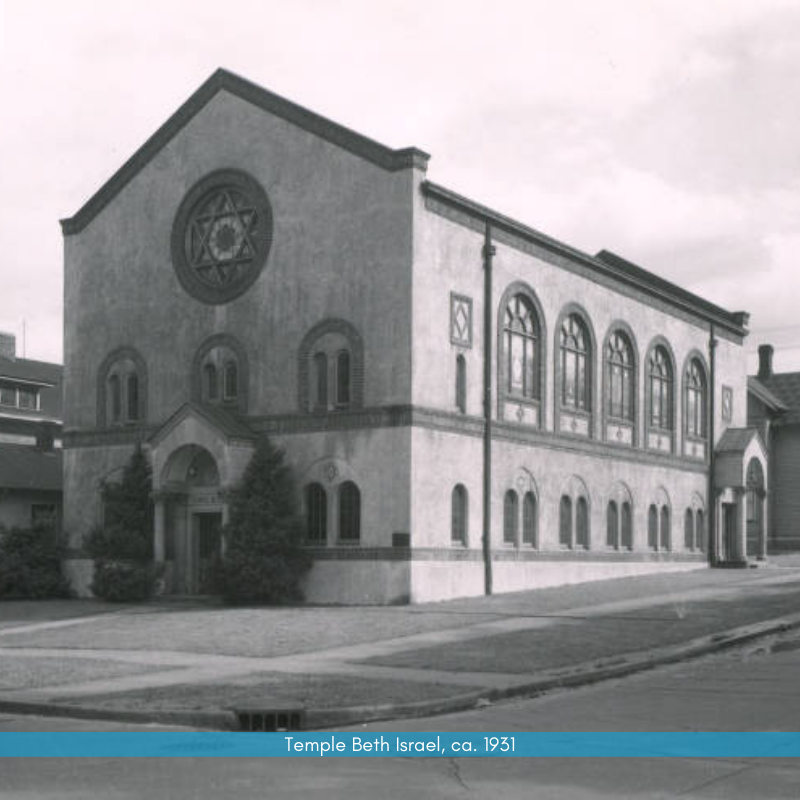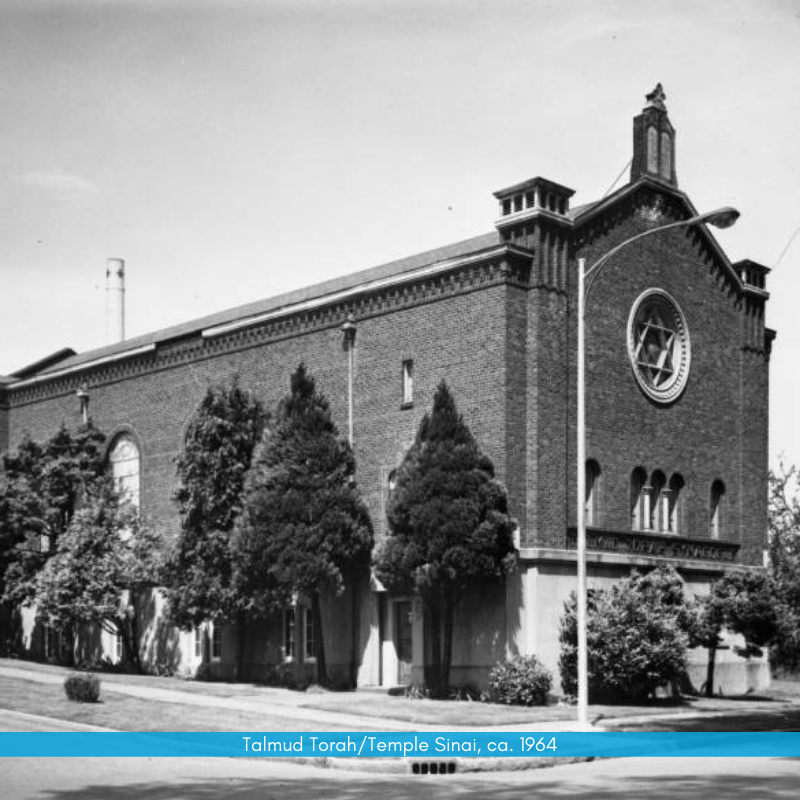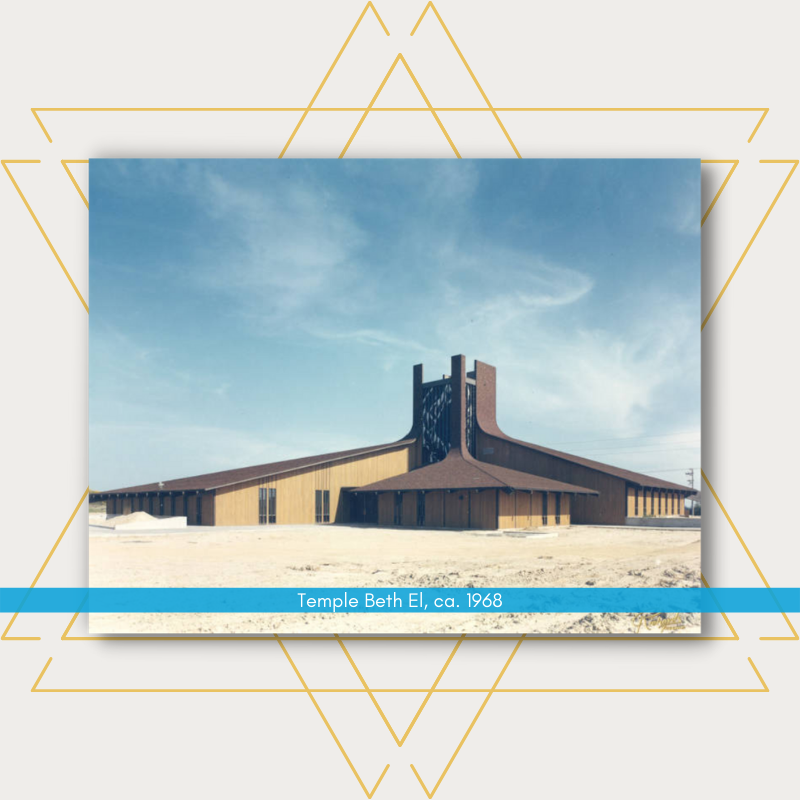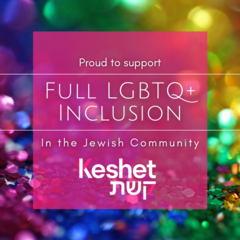History of Temple Beth El
History of Temple Beth El
Since the earliest Jewish settlers arrived in Pierce County, we Jews have been passionate about our Jewish identity and practices. Adolph Packscher and Isaac Pincus traveled from Steilacoom to San Francisco and Victoria in the early 1860s so they could have Jewish wedding services. The fledgling Jewish community of Steilacoom combined with their brethren in Olympia to form a benevolent society and cemetery in 1872. During the 1870s, Jews began arriving in what is now Old Tacoma at a rate that allowed them to close their stores at Rosh HaShanah, celebrating amongst themselves with a quiet champagne dinner.
1880s
The 1880s brought the development of the retail district on Pacific Avenue in downtown Tacoma, along with a flood of young Jewish merchants seeking opportunity. Despite the unavailability of kosher food and the expectation of a six-day workweek, the majority of Tacoma’s Jewish pioneers found ways to maintain their Jewish identity. Many timed their buying trips to coincide with Jewish holidays, often purchasing their merchandise through a vast Jewish network of suppliers. By 1888 they banded together to form their own benevolent society, now the Home of Peace Cemetery Association.
1890s
The vast majority closed their stores for the High Holidays, leaving the Tacoma News to lament in 1890, "…and in Jewish circles all business is at a standstill, which makes the retail portion of the city bear a somewhat deserted appearance." That year also brought the formation of a local chapter of B’nai B’rith and a Harmony Club, bringing Jews of Seattle and Portland to Tacoma for dances and other social functions. The women formed the Lady Judith Montefiore Society (a forerunner of today’s Sisterhood) operating a religious school for the children and providing charity where needed.
Anyone who has heard the phrase, “two Jews, three opinions,” knows that few decisions are unanimous. An article in the Tacoma Daily Ledger on Saturday, October 1, 1892, set a pattern for the next sixty-eight years in Tacoma: “Yom Kippur, the Jewish feast of the atonement, is being celebrated to-day by the Hebrews with special observances… The Orthodox Hebrews are holding their services in Elks’ hall, and the reform sect in the Unitarian church.” Tacoma’s Jewish community had grown large enough to agree to disagree.
Congregation Beth Israel
Those who met that year in the Unitarian church had formally organized as Congregation Beth Israel.
Tacoma’s first synagogue building, located on the corner of South 10th and “I,” was dedicated in September of 1893.
The new congregation chose to affiliate with the Reform Movement.
Chevra Talmud Torah
Those who chose to worship in a more Orthodox style were joined over the next several decades by a flood of immigrants from eastern Europe. Passionate about their Jewish identity and practices, they began meeting as a minyan in the rear of Hugo Stusser’s store, later holding services in a rented room at the Samson Hotel.
Chevra Talmud Torah was organized in 1906 and incorporated in December 1908. In 1910, the close-knit group purchased a church building on Tacoma Avenue South which was used through 1925. The congregation was the second in Washington to choose and Orthodox affiliation.
A third congregation, Chevrah Ahavas Israel, was formed in 1912. Although the congregation iself was short-lived, the members commissioned a Torah that is still in use. They filed articles of incorporation in the fall of 1913, and in 1914 organized the Chevra Kadisha Cemetery, now part of the Home of Peace Cemetery.
Temple Beth Israel
Meanwhile, Tacoma’s Jewish neighborhood was moving up from an immigrant group residing on lower “E” Street (now Fawcett) to an established community living in the north end. Temple Beth Israel sold their building on South 10th and “I” in 1918, dedicating a new temple on North 4th and “J” in 1922.
Sinai Temple
Chevra Talmud Torah followed suit, building a similar building (faced in brick rather than stucco) on South 4th and “I,” that was dedicated in 1925.
The 1930s brought several key changes. Under the direction of Rabbi Baruch Treiger, Talmud Torah changed its affiliation to Conservative. Rabbi Treiger also worked to form a Junior League known as “Treiger’s Tigers,” building friendships among young people from both congregations. Twenty years later those same youngsters would bring changes of their own. In the fall of 1945, the congregation took the name Sinai Temple.
Temple Beth El
In 1956 Rabbi Richard Rosenthal was hired to serve the pulpit of Temple Beth Israel. Perhaps in part because he himself was a European immigrant, he eventually became a friend to both congregations. After much discussion, arguing, and compromise, Tacoma’s two temples voted to merge in 1960. The north temple was sold in 1964 and services were held in the south temple until the construction of Temple Beth El in 1968.
The new Temple Beth El building, located in Tacoma’s growing west end at 5975 S. 12th St., was dedicated in May 1968. Vic Lyon and Jerry Spellman were leaders in planning and fund-raising for the new temple. The building contains a number of interesting architectural, spiritual, and symbolic features (see a tour of the building here).
In 1993, Temple Beth El was renovated. Over 19,000 square feet in new space was added for the growing congregation.
Temple Beth El Rabbis
Rabbi Richard Rosenthal became the spiritual leader of the combined congregations. He was named rabbi of the merged temples in 1960 and served Temple Beth El until his retirement in 1997. Rabbi Rosenthal then served as rabbi emeritus until his death in 1999. Rabbi Mark S. Glickman served as Temple Beth El's rabbi from 1997 until June 2004. Rabbi Bruce Kadden served as Temple Beth El's rabbi from July 2004 to June 2020 and currently serves as rabbi emeritus. Rabbi Keren Gorban has served as Temple Beth El's rabbi since July, 2022.
Wed, October 15 2025
23 Tishrei 5786
Today's Calendar
: 4:30pm |
: 4:30pm |
: 6:00pm |
: 6:00pm |
: 6:00pm |
Friday Night
: 5:00pm |
: 5:30pm |
: 5:45pm |
| Candle Lighting : 6:01pm |
: 6:30pm |
Shabbat Day
: 9:00am |
: 10:00am |
: 6:00pm |
Upcoming Programs & Events
Oct 15 |
Oct 15 |
Oct 15 |
Oct 16 |
Oct 16 |
This week's Torah portion is Parashat B'reishit
| Shabbat, Oct 18 |
Candle Lighting
| Friday, Oct 17, 6:01pm |
Erev Hanukkah
| Sunday, Dec 14 |
Stay In The Know!
Get emailed our weekly Shabbat Shalom newsletters,
monthly bulletins, and/or committee announcements:

Privacy Settings | Privacy Policy | Member Terms
©2025 All rights reserved. Find out more about ShulCloud

